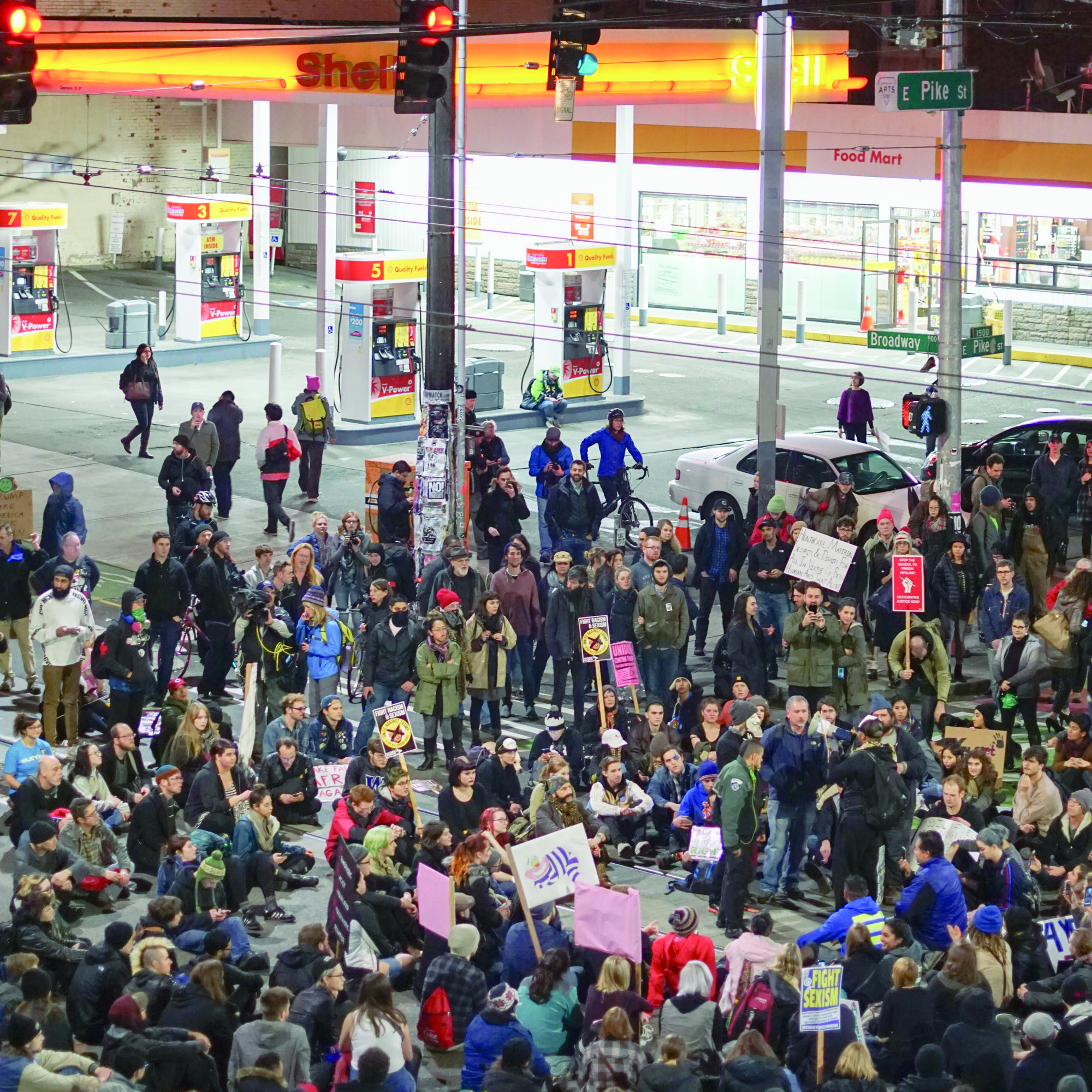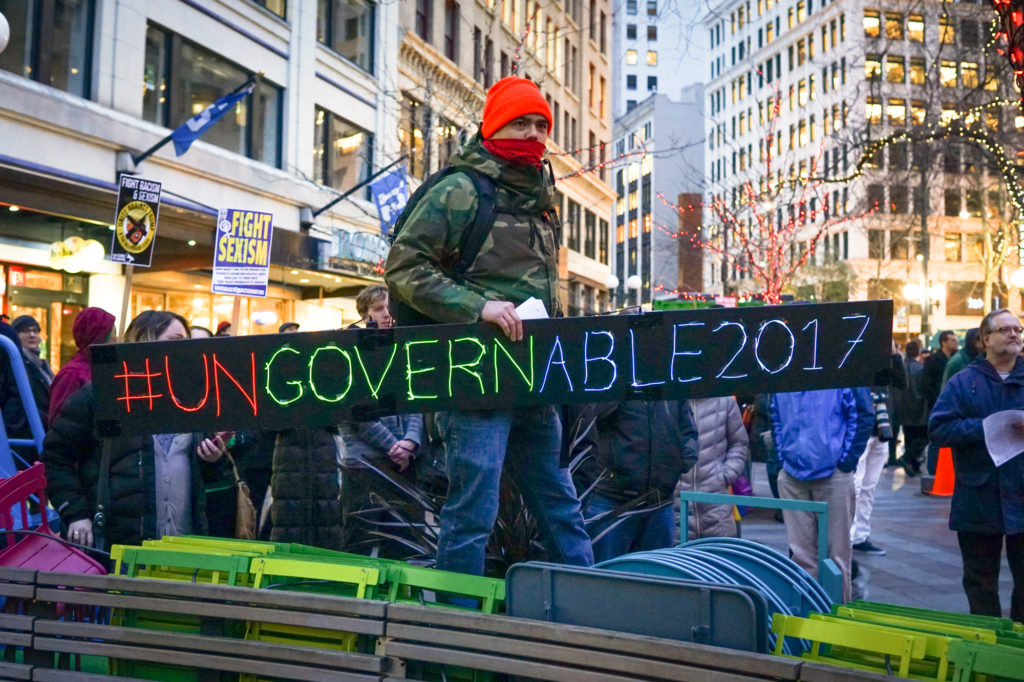Scores of demonstrations were held across the country following Donald Trump’s presidential inauguration on Friday, culminating in the largest inaugural protest in United States history.
In total, over 3 million protesters of all ages and experiences worldwide joined together to make a statement expressing their discontent with the Trump administration.
“I believe the best social justice advocacy education happens when we just dive in and act for justice,” said Mary-Antionette Smith, an associate professor of English and Women & Gender Studies at Seattle U. “There really is no road map for it. We learn as we go, and sometimes we make mistakes, but very often we get it right. The time is now, and given the fact that ‘folks are awake’ in this moment in our U.S. historical time, the time is ripe for stepping up and helping to stay awake and act for justice.”
Seattle U students experienced a variety of responses to the inauguration. For some, it’s their first time getting politically involved. Others have been doing this for years.
“It’s my first protest,” first-year student Abby Thomas said. “I just transferred here from a fairly conservative school in Philadelphia, where I didn’t have a lot of like-minded people who wanted to go into Philly and take action. They just wanted to say their opinion and be done with it. In Seattle people seem to be more active in voicing their opinions, but the real question is, what people will do after this weekend.”
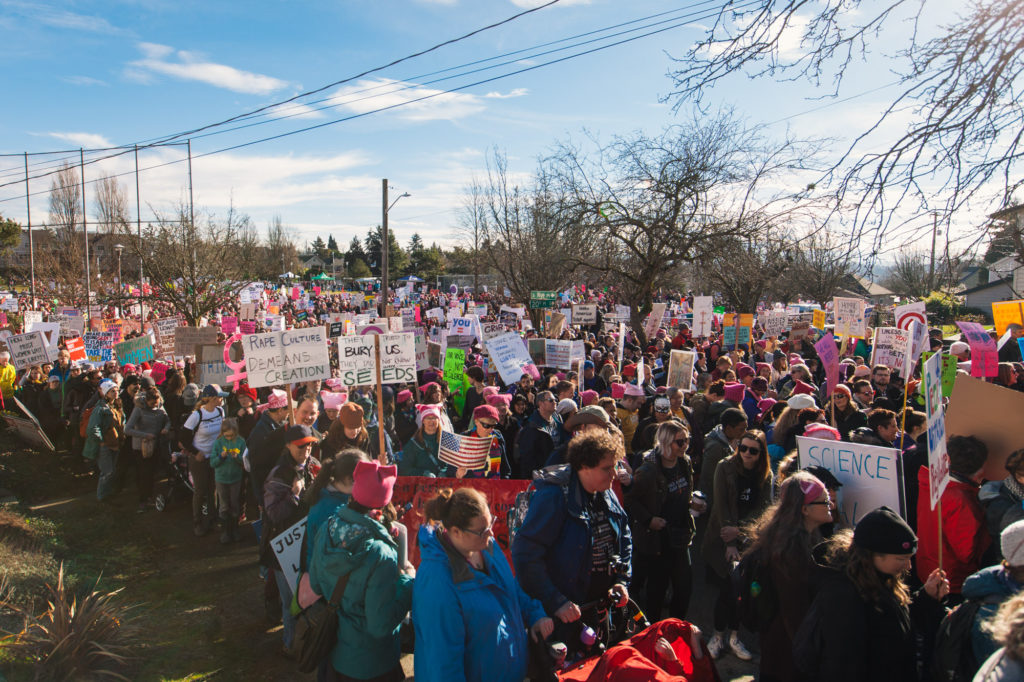
An endless stream of protesters flow from Judkins Park at the start of the Women’s March.
Carlos Rodriguez, a fourth-year student and President of Student Government of Seattle University (SGSU), said he has always been interested in marches and demonstrations that advocate for the rights of other people.
“I support these things all the time,” Rodriguez said. “If you’ve been doing this in the past, it’s something that been normalized for you to protest and fight for your basic rights, which shouldn’t be a thing, but I think for a lot of people that’s been the case.”
Trump, the 45th president of the United States, took the oath of office at noon on Friday. Demonstrations began shortly after across the country. Protests in Washington D.C. took a turn from peaceful to destructive when people began smashing storefront windows and a limousine was set on fire. D.C. police reported that 217 people were arrested on Friday after the events.
In Seattle, thousands gathered at Westlake Center that same night to protest Trump’s administration. The protest, led by Socialist Alternative Seattle and Socialist Students of Seattle, hosted a handful of speakers who argued that Trump’s administration will only deepen the divide in this country. They say his campaign will only benefit those who hold the top one percent of wealth in the U.S.
The speakers also criticized Trump’s campaign rhetoric, maintaining that racism, sexism, ableism and Islamophobia must be stopped.
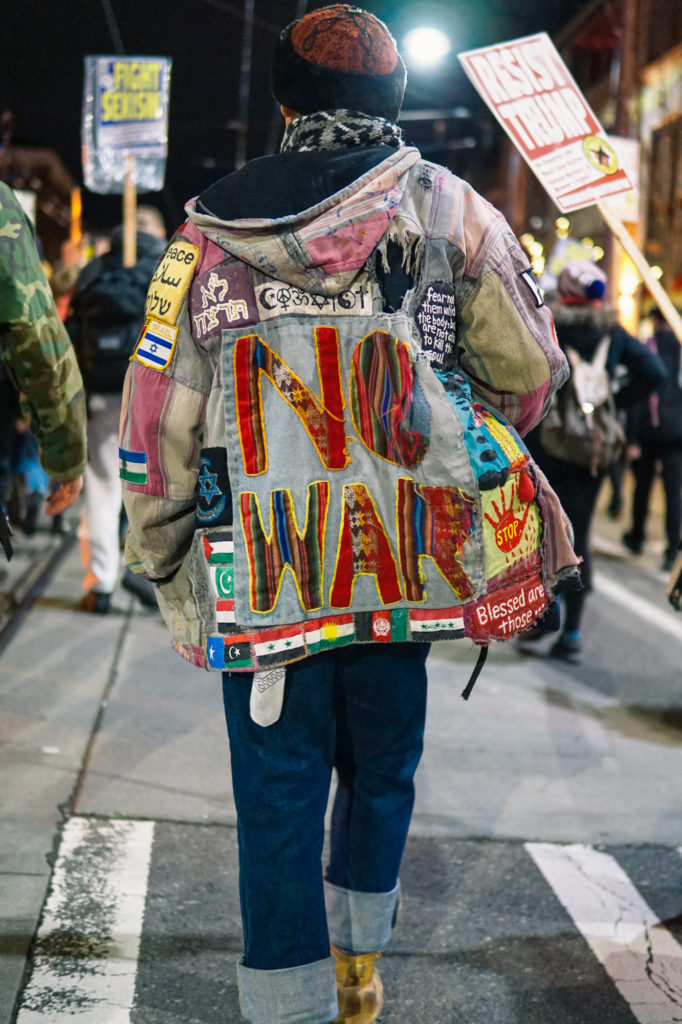
Onlookers joined in as the march passed through Capitol Hill and headed toward UW.
After the protest ended around 6:30 p.m., crowds flooded Pine St. to join a march that was unregistered with the city of Seattle. Police in riot gear were quick to act on their feet once the central protest poured into the streets.
Police reported that they had to quickly close off streets to protect the protestors, leaving cars gridlocked into the late hours of the night.
Further north, at the University of Washington, a protest fighting Trump’s administration and an event featuring controversial Breitbart News journalist and speaker Milo Yiannopoulos turned violent. One person was shot following an altercation at the protest, and has remained in serious condition at Harborview Medical Center.
On Saturday, even more people took to the streets. The Women’s March on Washington, which took place in several cities across the country, was organized to build solidarity between women and those who support women, so they can pursue further action together under the Trump Administration over the next four years.
Tamika Mallory and Linda Sarsour, who both helped organize the march in Seattle, spoke on a podcast to detail the goals of the demonstration.
“The purpose is to really allow an opportunity for many of the communities that have felt marginalized and in some ways by the rhetoric and the actions of people in the past election cycle, and even before that,” Sarsour said. “Even prior to this election cycle, certain communities have been feeling oppressed, and I feel like we’re providing an opportunity to give people a space to voice their concerns, to build power with one another where they are able to find allies and like minded individuals who are willing to work with them in their local communities.”
Upwards of 600,000 gathered together in Washington, D.C. on Saturday for the women’s march. In Los Angeles, estimates reached 350,000 people, according to LA Weekly. It is estimated that 2.9 million people marched on Saturday nationwide, making the Women’s March on Washington the largest inaugural protest in United States history. This doesn’t include the thousands who marched in over 50 countries worldwide, and a march on the continent of Antarctica.
Seattle had never seen a march of this size, where a crowd of an estimated 130,000 women, gender non-conforming, non-binary and people that support women marched through the streets.
Beginning in Judkins Park, the crowd marched down Jackson Street through the International District, turning right on Fourth Avenue, walking all the way downtown before finishing at the Seattle Center. KING5 reported that the march, measured from the first person to the last, was over three miles long, and that people were just entering downtown at 4 p.m. when the march was scheduled to end.
“I went into the march feeling very conflicted about it,” said second-year student Hannah Lang. “I was concerned that the march shouldn’t be about anti-Trump, it should be about the systemic issues within our country that caused the election of Donald J. Trump.”
“I went to the march because I felt like I needed to. As for the march itself, it was incredibly vibrant and peaceful, however there were parts that were not so great,” Lang said. “I felt like there was a lack of representation of transgender individuals, and I do think white women who showed up feel like for the first time in their lives that their rights are being threatened. If this is the first time people are marching, then that’s problematic.”
The March on Washington was created to build a network of people who can continue to act after inauguration weekend.
“We want people to focus on local elections,” Tamika Mallory, an aforementioned organizer of the march, said during an interview on a podcast called Pod Save America. “The power doesn’t just lie in Washington, D.C., it lies in your capitol buildings and in your city halls. We gotta keep people awake, we gotta keep the message strong: we can’t afford the silent majority anymore.”
Organizers of the march introduced 10 actions for the first 100 days of Trump’s tenure in the White House. The plan provides marchers with an action every 10 days. The first action: write a letter to your respective senators, detailing what matters to them and how he or she is going to continue to fight for it in the coming weeks and months ahead.
Seattle U students are also beginning to plan how they will become involved locally and nationally over the course of the next four years.
Second-year student Adrienne Hohensee started volunteering for Planned Parenthood.
“I recently did some phone banking stuff with them, and I feel like that’s a good way to get involved with them and the democratic system,” Hohensee said.
Second-year student Sena Crow has been fighting against the new juvenile detention center that just received a permit to be built two blocks away from campus.
“More and more people are getting involved with very local issues,” she said. “Which is cool because the lawmakers they are pushing back against are hailed as progressive and liberal.”
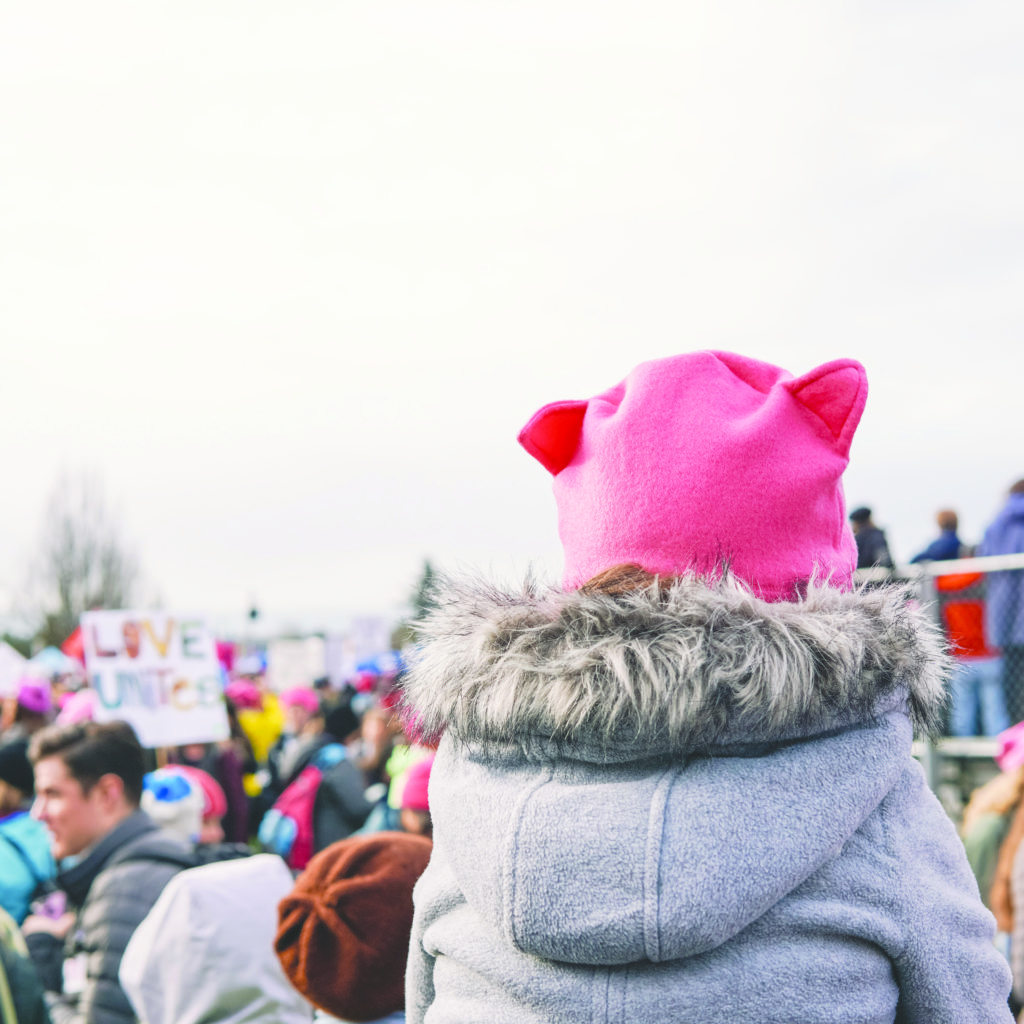
Thousands sported homemade “Pussyhats” to show support for women during the march.
“We can be proud of ourselves and say that was a historic march, but there is still so much work to be done,” Lang said, summing up the weekend. “It should be about every step of the way after this. For the first time since the election, I have felt a sense of hope and purpose.”
Despite an uncertain future, this weekend’s demonstrations have built a strong community that stretches from coast to coast and around the world. Disillusioned voters are now focused and determined to have their nose to the grind to fight for the rights of those who are most vulnerable.
Anna may be reached at
akaplan@su-spectator.com



